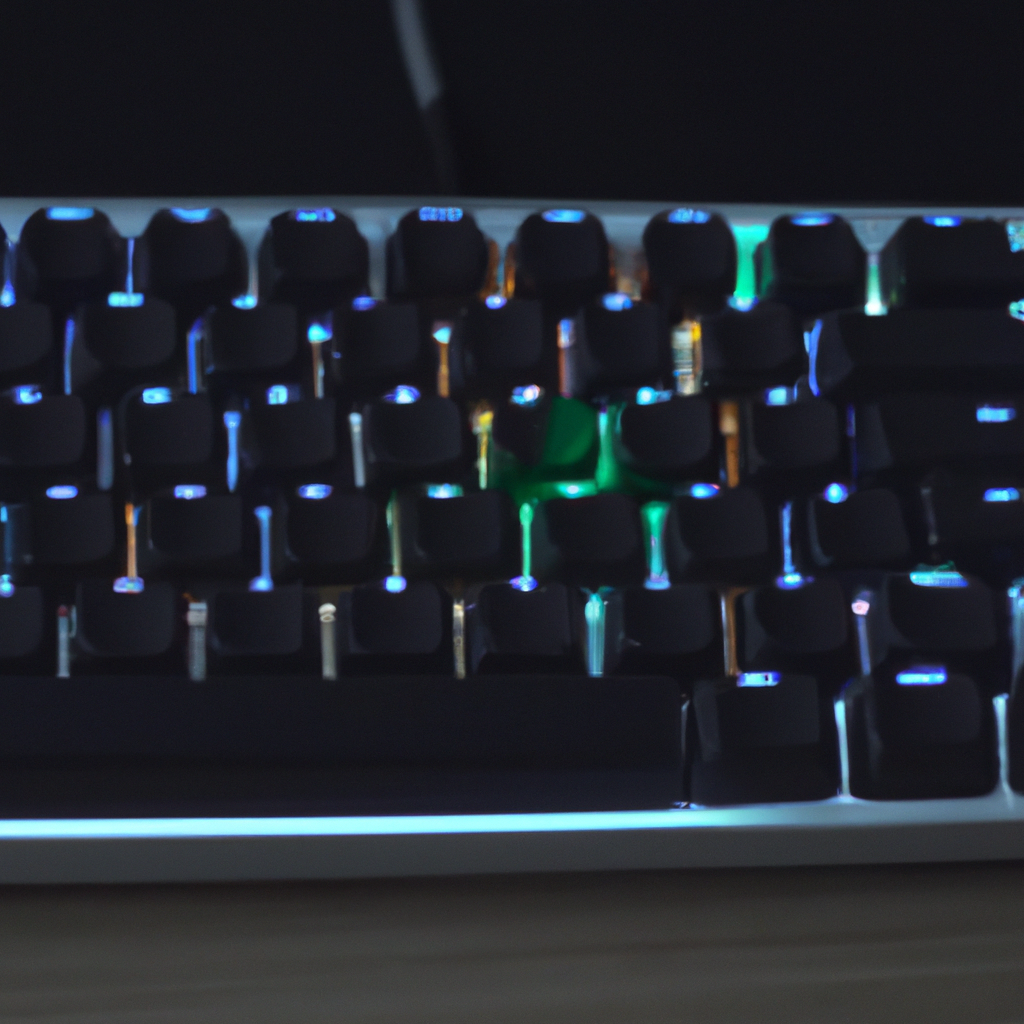Mechanical keyboards have become increasingly popular among gamers and typists, with many preferring them over membrane keyboards. But, how does a mechanical keyboard work? In this article, we will delve into the inner workings of mechanical keyboards, exploring key switches, keycaps, key travel, tactile feedback, actuation force, and more.
Key Switches
A mechanical keyboard differs from a membrane keyboard in that each key has its own switch. The key switch is the mechanism that registers the keystroke and sends a signal to the computer. These switches are made up of several components, including a stem, spring, and metal contacts.
When a key is pressed, the stem pushes down on the spring, which compresses and stores energy. As the spring reaches its maximum compression, the stem makes contact with the metal contacts, completing the circuit and sending a signal to the computer. The amount of force required to activate the switch is known as the actuation force.
There are several types of key switches available, each with its own characteristics. Some switches require more force to activate, while others provide tactile feedback and an audible click. The most popular types of switches include:
– Cherry MX: These switches are the most popular and come in several variants, including Red, Brown, Blue, and Black. Red switches are linear, requiring little force to activate, while Brown switches are tactile and require more force. Blue switches are tactile and provide an audible click, while Black switches are linear and require more force.
– Kailh: These switches are similar to Cherry MX switches, but are generally cheaper and have a higher actuation force. They come in several variants, including Red, Brown, Blue, and Black.
– Gateron: These switches are similar to Cherry MX switches and are known for their smoothness and consistency. They come in several variants, including Red, Brown, Blue, and Black.
Keycaps
Keycaps are the plastic pieces that cover the switches and are responsible for providing a surface for typing. These keycaps come in a variety of materials, including ABS plastic, PBT plastic, and metal. The material used can affect the feel and sound of the keyboard.
Gaming Keyboard
Mechanical keyboards are popular among gamers due to their responsiveness and tactile feedback. Gaming keyboards often come with additional features, such as programmable keys, backlighting, and multimedia controls.
Typing Experience
The typing experience on a mechanical keyboard can vary depending on the type of switch and keycap used. Linear switches, such as Cherry MX Reds, provide a smooth typing experience, while tactile switches, such as Cherry MX Browns, provide feedback when a key is activated. Clicky switches, such as Cherry MX Blues, provide both tactile feedback and an audible click.
Mechanical vs Membrane Keyboard
Mechanical keyboards are generally considered to be superior to membrane keyboards due to their durability and responsiveness. Membrane keyboards use a rubber dome to register keystrokes, which can wear out over time. Mechanical keyboards, on the other hand, use individual switches, which can be replaced if they fail.
Mechanical Keyboard Sound
One of the most distinct features of a mechanical keyboard is the sound it produces. Clicky switches, such as Cherry MX Blues, produce a loud clicking sound when activated. Tactile switches, such as Cherry MX Browns, produce a softer sound. Linear switches, such as Cherry MX Reds, produce no sound at all.
Key Travel
Key travel refers to the distance a key travels before it registers a keystroke. Mechanical keyboards generally have a longer key travel than membrane keyboards, which can provide a more satisfying typing experience. The amount of key travel can vary depending on the type of switch used.
Tactile Feedback
Tactile feedback refers to the sensation felt when a key is activated. Tactile switches, such as Cherry MX Browns, provide a bump when the switch is activated, providing feedback to the typist. Linear switches, such as Cherry MX Reds, provide no tactile feedback.
Actuation Force
Actuation force refers to the amount of force required to activate a key switch. Some switches, such as Cherry MX Reds, require very little force, while others, such as Cherry MX Blacks, require more force. The amount of force required can affect both the typing experience and the sound produced by the keyboard.
In conclusion, mechanical keyboards work by using individual switches for each key, each with its own stem, spring, and metal contacts. These switches come in several types, including Cherry MX, Kailh, and Gateron. Keycaps cover the switches and come in a variety of materials, including ABS plastic, PBT plastic, and metal. Mechanical keyboards offer a superior typing experience compared to membrane keyboards, with features such as tactile feedback, key travel, and actuation force. They also produce a distinct sound, which can vary depending on the type of switch and keycap used. Whether you are a gamer or a typist, a mechanical keyboard can provide an exceptional typing experience that will enhance your productivity and enjoyment.







